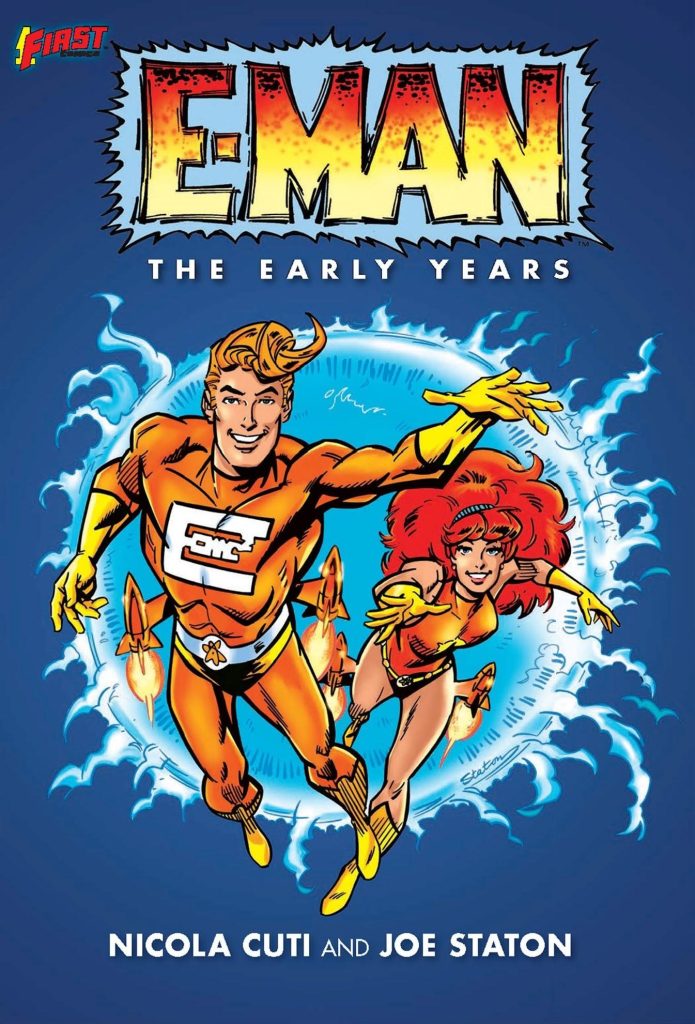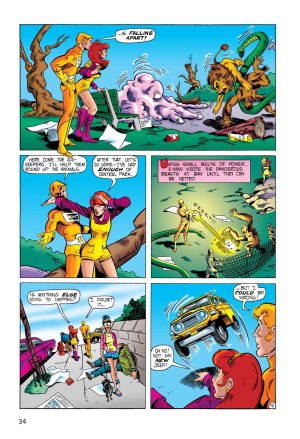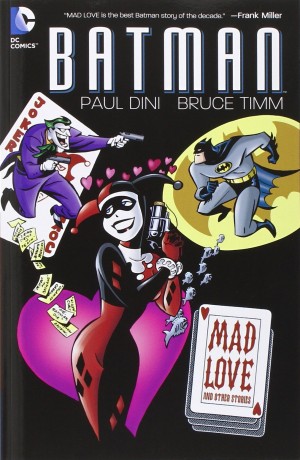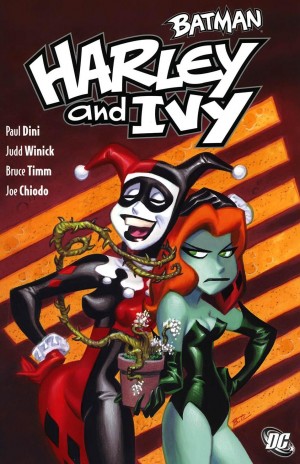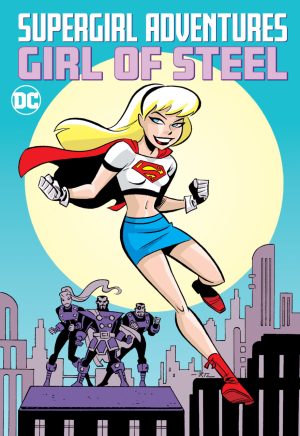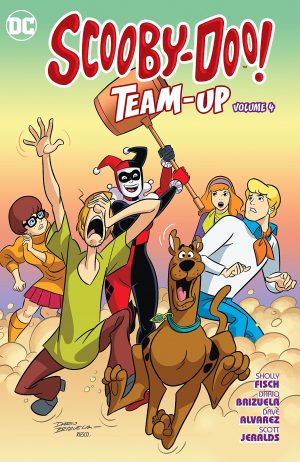Review by Frank Plowright
By the 1970s DC and Marvel between them had pretty well sewn up the superhero market, and competitors were rare. There were a few exceptions, though, and one of the finest was E-Man. While other superheroes became more and more concerned with embracing realism Nicola Cuti looked backward to Plastic Man, who joyfully transformed into all kinds of objects during goofy adventures supplying action and laughs. Also serving to make E-Man stand out was artist Joe Staton being a cartoonist, and a very good one, when superhero comics strived for realism.
There’s no messing about with a long and tortured origin. In the first panel a sentient nova breaks away from an exploding star, and four pages later it’s on Earth in male human form having manifested in the dressing room of exotic dancer Nova Kane, earning her college fees. Under the alias Alec Tronn, E-Man remains on Earth becoming involved in all kinds of quirky adventures and picking up some neat supporting characters along the way.
E-Man’s energy powers allow him to do pretty much anything, so there’s never any great threat, just mystery and humour in good-natured adventures that can involve alien invaders, ancient Egypt or power-mad industrialists. Cuti isn’t hung up on complicated explanations, which ensures the creativity flows when E-Man’s where he needs to be, whether that’s another dimension (he slips in undersea) or when someone else acquires the same powers as E-Man (a simple explosion does the trick).
Staton buys into this with gloriously quirky art that should look even better now there’s no longer an issue about superheroes being drawn in cartoon style. His designs for villains and threats are great, the Brain from Sirius being an enormous pulsing brain in giant containing machinery with all kinds of tubes and wires emanating from it. You can almost smell seedy private eye Michael Mauser, and there’s a great illustration of him hiding in a bin, while Nova has an innate glamour. Staton also fills the background with incidental jokes, increased when Teddy Q becomes a regular part of the cast late on.
Two different artists are used for colour restoration, with the darkness supplied by Alex Wald less suited to the tone of the strips, while the colouring of Matt Webb is far more in keeping as bright and cheery.
This selection begins strongly, and just keeps improving as Cuti realises E-Man can fit into any kind of story, and the best is the last to actually reach the newsstands back in the day, an inventive Li’l Abner pastiche that nevertheless injects original content. The collection ends with stories only previously seen in the limited circulation fanzine Charlton Bullseye, here provided in colour for the first time.
Joyous, creative and exuberant, these E-Man strips still read well today, if now resembling period pieces due to Staton’s attention to detail when it came to 1970s fashion. Otherwise, though, they could be 21st century strips. Well worth the time of anyone who’s enjoyed the likes of DC Bombshells or any of the recommended reading.
